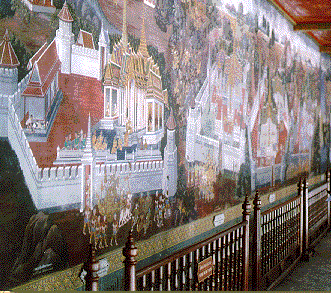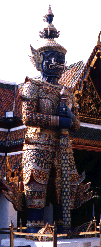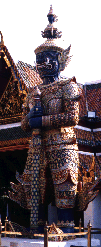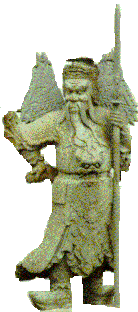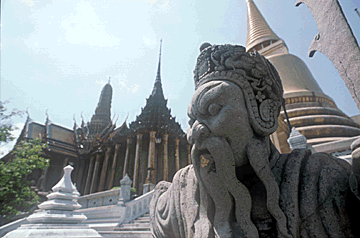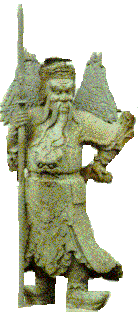Eight Prangs
 In
front of the Temple of the Emerald Buddha on the east, is a row of eight
prangs. They were dedicated respectively from the north to the south to
the following important elements of Buddhism: the Buddha, the Dhamma (the
Law), Bhikkhus (Buddhist monks), Bhikshunis (Buddhist nuns who existed
in the old days), Pacchekabodhi Buddhas (Buddhas who attained Enlightenment
but never preached), Chakravatis (great emperors), the Bodhisatta (the
Buddha in his previous lives, according to Theravada Buddhism) and Maitreya
(the future Buddha).
In
front of the Temple of the Emerald Buddha on the east, is a row of eight
prangs. They were dedicated respectively from the north to the south to
the following important elements of Buddhism: the Buddha, the Dhamma (the
Law), Bhikkhus (Buddhist monks), Bhikshunis (Buddhist nuns who existed
in the old days), Pacchekabodhi Buddhas (Buddhas who attained Enlightenment
but never preached), Chakravatis (great emperors), the Bodhisatta (the
Buddha in his previous lives, according to Theravada Buddhism) and Maitreya
(the future Buddha).
|
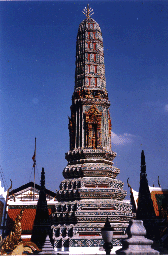
|
